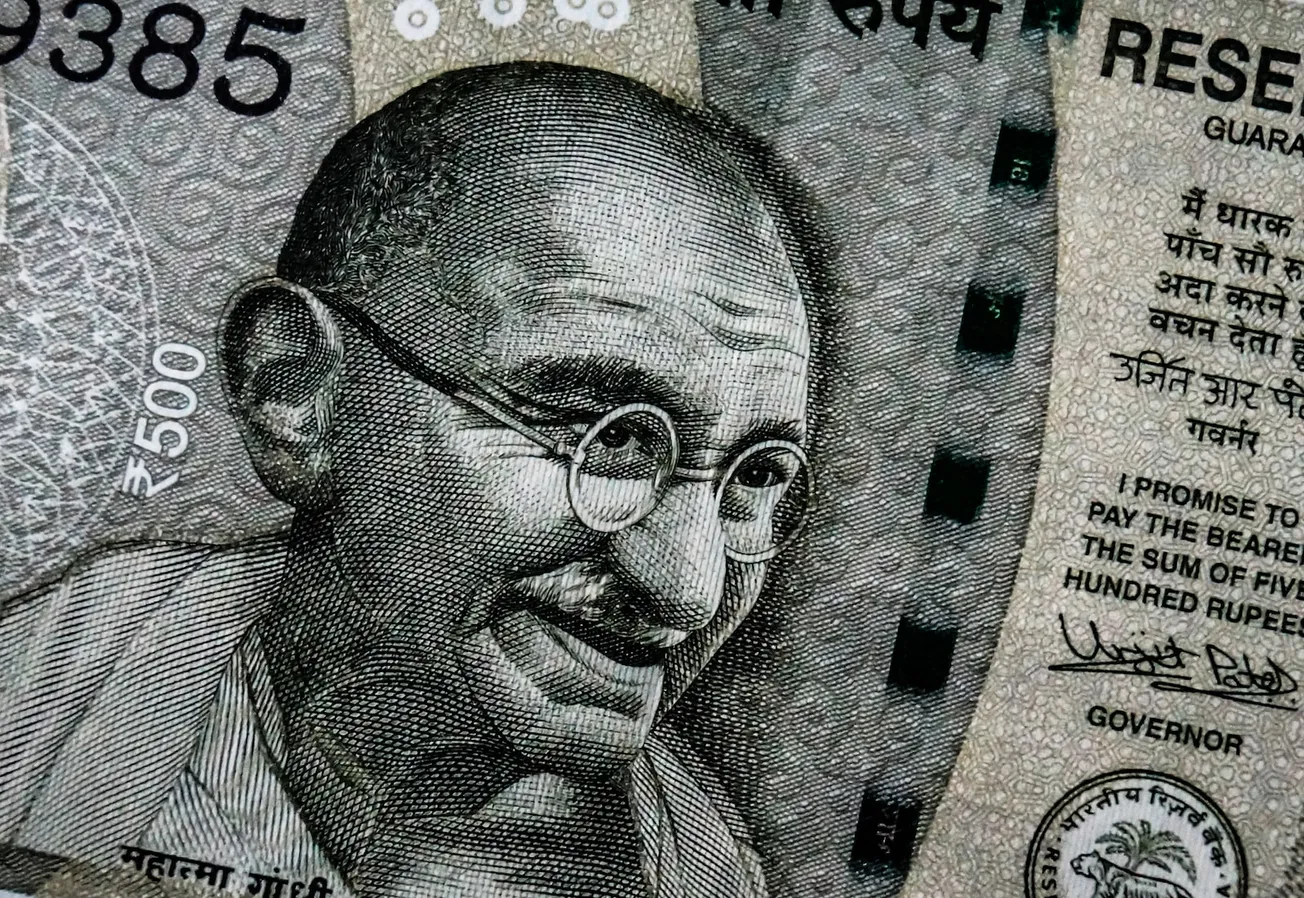Table of Contents
Jon Miltimore
Jonathan Miltimore is the Managing Editor of FEE.org. (Follow him on Substack.) His writing/reporting has been the subject of articles in TIME magazine, The Wall Street Journal, CNN, Forbes, Fox News, and the Star Tribune. Bylines: Newsweek, The Washington Times, MSN.com, The Washington Examiner, The Daily Caller, The Federalist, the Epoch Times.
For a long time, I didn’t quite understand the infatuation with Gandhi. As a teenager, I knew little about him, beyond the fact that he fiercely opposed Great Britain’s colonial rule through non-violence and was important enough to be known by one name (like Madonna and Prince).
I’ve been digging into Gandhi’s life a little more deeply after stumbling on Eknath Easwaran’s 2011 book, Gandhi the Man: How One Man Changed Himself to Change the World, in part because of my own growing interest in the philosophy of non-violence.
A Brief History
Mohandas Karamchand Gandhi was born in “a dark, windowless ground-floor room” of a modest home in the city of Porbandar, India on Oct. 2. 1869. The fourth (and final) child of Karamchand and Putlibai Gandhi, Mohandas was described as a “restless” child and a voracious reader of Indian classics.
At age 9, the family moved to the smaller city of Rajkot after Karamchand became an advisor to the city’s ruler, and Mohandas entered a local school. He was an average student, shy and bookish. Gandhi married at age 13 as custom demanded (his bride was 14) and the couple would eventually have five children (four of which survived, all sons).
In 1888, a year after graduating high school, Mohandas enrolled at an unexceptional college in Bombay—and promptly quit. Several family members, however, encouraged him to continue his studies abroad—in England. Putlibai Gandhi did not like the idea of her son leaving his family to study in another country, but she agreed to the request after Mohandas promised her that he’d abstain from women, spirits, and meat.
While in London, Gandhi studied literature and then law, and honored his abstemious promises. (He was even elected to the executive committee of the London Vegetarian Society.) When he returned to India in the summer of 1891 he received unwelcome news: his mother had died while he was studying in England, and his family had kept the news from him. To complicate matters, Gandhi struggled to establish a law practice in India, largely due to the fact that he was miserable at cross examination. Fortunately, however, a new opportunity arose, when he was offered an opportunity to represent a client in South Africa.
Life in South Africa
Gandhi would spend the next 21 years of his life in South Africa, and the experience would have a profound impact on his life and philosophy. The racism he experienced in South Africa would lead him to question the British Empire in a way he had never done before.
Despite his growing doubt about his people’s role in the British Empire, Gandhi volunteered to lead a group of stretcher-bearers in an ambulance unit following the Bambatha Rebellion in 1906. His service would earn him the Queen’s South Africa Medal. But the conflict would sharpen his distaste for violence.
The pivotal moment arrived later that year when the Transvaal government introduced the Asiatic Registration Act of 1906, which required every Indian and Chinese male to register with the state by producing a thumb-print on demand to verify his identity. Gandhi saw the act as a humiliating affront, and encouraged people to resist the law as an act of civil disobedience—and if necessary to suffer the consequences.
By this time Gandhi had familiarized himself with the writings of the great Russian author Leo Tolstoy, including Tolstoy’s Christian anarchist treatise The Kingdom of God Is Within You, which advocates non-violence as a vehicle of social change. And Gandhi’s embrace of non-violence marked the beginning of his still-evolving philosophy of Satyagraha, which is defined as “a determined but non-violent resistance to evil.”
I used to think the philosophy of Gandhi and Tolstoy (whose work on non-violence I read many years ago) was crazy. I no longer do. In fact, Gandhi’s success in freeing India from colonial rule shows the power of non-violence, much like Dr. Martin Luther King Jr.’s non-violent movement did in the US. And then there is Jesus of Nazareth, who changed the world not by the sword, but through sacrifice and suffering.
What’s crazy to me today is how comfortable people are with the idea of using violence and state coercion to improve the world. I don’t understand how more people don’t recognize that a society built on violence and plunder will not yield rotten fruit.
Gandhi knew better. And to help you understand his message on violence—which he saw intertwined with the state—here are some of his best quotes on the subject.
- “The state represents violence in a concentrated and organized form. The Individual has a soul, but as the state is a soulless machine, it can never be weaned from violence to which it owes its very existence.” – Modern Review (October, 1935) p. 412. Interview with Nirmal Kumar Bose (9/10 November 1934)
- “Victory attained by violence is tantamount to a defeat, for it is momentary.” -Satyagraha Leaflet No. 13 (3 May 1919)
- “By its very nature, non-violence cannot ‘seize’ power, nor can that be its goal. But non-violence can do more; it can effectively control and guide power without capturing the machinery of government. That is its beauty.”-Young India (Feb. 7, 1931) p. 162
- “Disobedience without civility, discipline, discrimination, non-violence, is certain destruction. Disobedience combined with love is the living water of life.” -Young India (1 May 1922)
- “Non-violence is the summit of bravery. And in my own experience, I have had no difficulty in demonstrating to men trained in the school of violence the superiority of non-violence.” -Young India, 1924-1926. S. Ganesan. 1927. pp. 36-37.
- “The man who uses coercion is guilty of deliberate violence. Coercion is inhuman.” -as quoted in Mahatma, edit., D.G. Tendulkar, Vol. 7
- “An unjust law is itself a species of violence. Arrest for its breach is more so.” – Non-Violence in Peace & War (1962)
- “A good person will resist an evil system with his whole soul. Disobedience of the laws of an evil state is therefore a duty.” -Non-Violent Resistance
- “The cry for peace will be a cry in the wilderness, so long as the spirit of nonviolence does not dominate millions of men and women.”- “Non-Violence — The Greatest Force” in The World Tomorrow (5 October 1926)
- “In this age of the rule of brute force, it is almost impossible for anyone to believe that anyone else could possibly reject the law of final supremacy of brute force.” -The Doctrine Of The Sword (1920)
- “Nonviolence in its dynamic condition means conscious suffering. It does not mean meek submission to the will of the evil-doer, but it means the putting of one’s whole soul against the will of the tyrant.” -The Doctrine Of The Sword (1920)
- “I object to violence because, when it appears to do good, the good is only temporary, the evil it does is permanent.” -Young India (21 May 1925)
This article was originally published on FEE.org. Read the original article.









